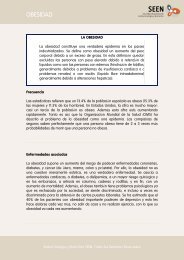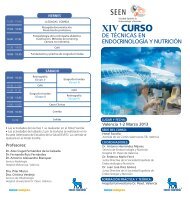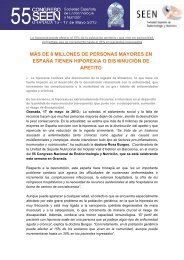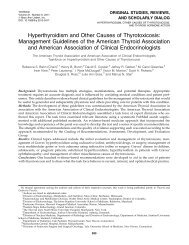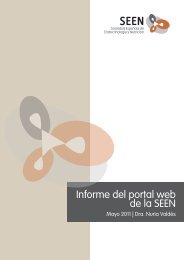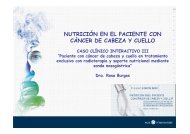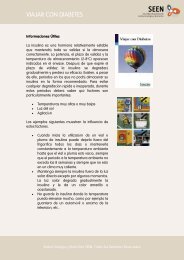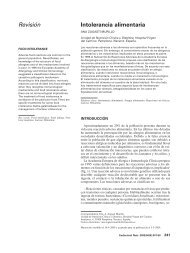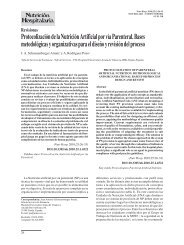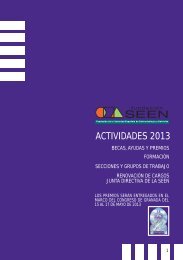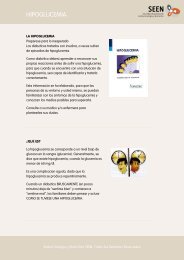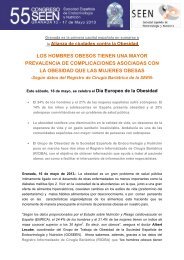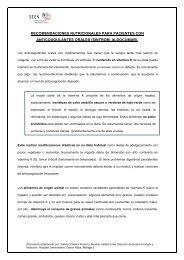Basic Concepts of Fluid and Electrolyte Therapy
Basic Concepts of Fluid and Electrolyte Therapy
Basic Concepts of Fluid and Electrolyte Therapy
Create successful ePaper yourself
Turn your PDF publications into a flip-book with our unique Google optimized e-Paper software.
Colloid – a fluid consisting <strong>of</strong> microscopic particles (e.g. starch or protein)<br />
suspended in a crystalloid <strong>and</strong> used for intravascular volume<br />
expansion (e.g. 6% hydroxyethyl starch, 4% succinylated gelatin, 20%<br />
albumin, etc.).<br />
Balanced crystalloid – a crystalloid containing electrolytes in a concentration<br />
as close to plasma as possible (e.g. Ringer’s lactate, Hartmann’s<br />
solution, Plasmalyte 148, Ster<strong>of</strong>undin, etc.).<br />
Osmosis – this describes the process by which water moves across a<br />
semi-permeable membrane (permeable to water but not to the substances<br />
in solution) from a weaker to a stronger solution until the<br />
concentration <strong>of</strong> solutes are equal on the two sides.<br />
This force is termed osmotic pressure or, in the case <strong>of</strong> colloids e.g.<br />
albumin, oncotic pressure. It is proportional to the number <strong>of</strong> atoms/<br />
ions/molecules in solution <strong>and</strong> is expressed as mOsm/litre (osmolarity)<br />
or mOsm/kg (osmolality) <strong>of</strong> solution. In clinical chemistry the term<br />
‘osmolality’ is the one most <strong>of</strong>ten used. For example, out <strong>of</strong> approximately<br />
280-290 mOsm/kg in extracellular fluid the largest single contributor<br />
is sodium chloride. This dissociates in solution <strong>and</strong> therefore<br />
its component parts Na + <strong>and</strong> Cl – exert osmotic pressure independ ently<br />
i.e. Na + (140 mmol/kg), contributes 140 mOsm/kg, <strong>and</strong> Cl – (100 mmol/<br />
kg) contributes 100 mOsm/kg. Additional balancing negative charges<br />
come from bicarbonate (HCO 3 – ) <strong>and</strong> other anions. In the intracellular<br />
space K + is the predominant cation (see below).<br />
Because glucose does not dissociate in solution, each molecule,<br />
although much larger than salt, behaves as a single entity in solution<br />
<strong>and</strong> at a concentration <strong>of</strong> 5 mmol/kg, contributes only 5 mOsm/kg to<br />
the total osmolality <strong>of</strong> plasma.<br />
The cell membrane <strong>and</strong> the capillary membrane are both partially permeable<br />
membranes although not strictly semi permeable in the<br />
chemical sense (see below). They act, however, as partial barriers<br />
26




